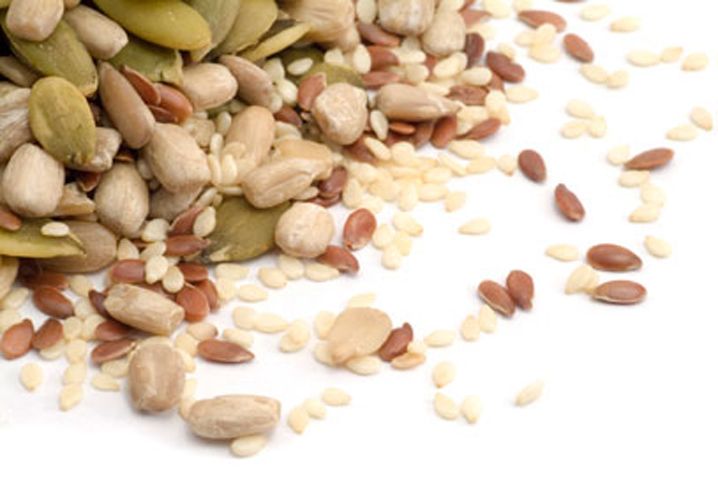Gum Gifts: What's new in the hydrocolloids market?
Today’s gum market gives everyone new opportunities.

Manufacturers around the world depend on gums and hydrocolloids, whether for improving yogurt mouthfeel or binding granola clusters. But as the market grows for these humble plant substances, so too does the need for increased performance.
So what’s new in the gum market?
Gums + Fiber
The high price of some gums can be a necessary burden for formulators-that is, unless they realize the benefits of combining gums with citrus fiber. As part of a continuing effort to lower customer costs, Gum Technology Corp. (Tucson, AZ) now offers Hydro-Fi, a line of gum and citrus fiber combinations that joins the textural and stabilizing ability of gums with the moisture-management qualities of citrus fiber. The resulting solutions can lower the need for pricey gums while improving the functional synergies of finished products.
“We saw the benefits of using citrus fiber as a moisture-binding agent,” says Josh Brooks, Gum Tech vice president of sales. “Its unique properties allow for freeze-thaw stability and staling reduction, because it prevents water from migrating or separating out.”
In-house research at Gum Tech suggests a wealth of potential Hydro-Fi applications, including: better cling in sauces and dressings; better yield and texture of ground meat; reduced-egg cake applications; and reduced fat and crystal size in ice cream. Adding fiber to an ingredient list isn’t a bad move either.
Crumbs at the Bottom of the Bag?
Despite their deliciousness, crumbs at the bottom of a snack bag are the result of an adherence issue. And when salt, seeds, spices, and other topical ingredients can’t stay on snack foods, it can be a pricey waste of raw material; after all, topical inclusions are sometimes the most expensive ingredients in a formulation.
What, then, do manufacturers do to keep these ingredients in their rightful place?
They often use egg wash-which comes with a requisite allergy statement, contamination risks, and the need for refrigeration.
For egg-free adherence, try Add-Here CSA from TIC Gums (White Marsh, MD). It’s a gum system that the company says will keep more inclusions on food, even with the same gloss of egg wash. Sprayable and easily dispersible, Add-Here CSA might just shorten production time. It can even seal burritos and fruit pockets!
Talking Gums
We now have an unofficial gum lexicon.Courtesy of TIC Gums, the “Texture Revolution” lexicon makes talking about gums easier than before, with enough descriptive words to get formulators saying exactly what it is they want from gums.
Consider a term like crunchy, says TIC Gums applications manager Michael Flemmens. “‘Crunchy can mean a million things, but there are also highly specific attributes, like tooth pack. If customers and developers can agree on the vocabulary, this might really short-circuit the development process.”
The lexicon covers more than 100 useful words and is freely available online.
Flax
If gums aren’t your thing, flax may be an alternative, thanks in large part to ingredient supplier Glanbia Nutritionals (Fitchburg, WI). The company’s OptiSol 5000 range of flaxseed ingredients now includes OptiSol 5300, a guar gum replacer that Glanbia says can be cheaper than guar and other gum systems. It works at a lower inclusion rate than its predecessor, and it’s high in fiber and protein.
Consider OptiSol 5300 for applications such as bakery mixes, gluten-free baked goods, breadings and batters, and more.
Also read about:
Xanthan Gum Litigation
First, guar gum prices rocketed because of oil fracking. But when gum supplier CP Kelco (Atlanta) filed for litigation last year with the U.S. Department of Commerce, it was because some xanthan gum prices were just too low.
Nutritional Outlook has learned from CP Kelco that Chinese and Austrian xanthan suppliers are exporting xanthan gum to the United States at prices so low that local suppliers can’t compete. The Commerce Department first estimated that dumping margins-the amount by which a product is sold under normal value-were at 17.18% and 21.69–154.07% for Austrian and Chinese suppliers and producers, respectively. As of this writing, CP Kelco said that Commerce officials were enroute to China and Austria to verify those estimates. If any new data is uncovered, it will weigh into Commerce’s final determination, which is scheduled for May 18, 2013, and likely to include tariffs on foreign xanthan.
The Nutritional Outlook Podcast Episode 36: Best of the Industry Service Provider, Radicle Science
December 26th 2024Nutritional Outlook's managing editor, Sebastian Krawiec, interviews Radicle Science co-founders, Pelin Thorogood and Jeff Chen, MD. Radicle Science has been selected as this year's Best of the Industry, Service Provider.